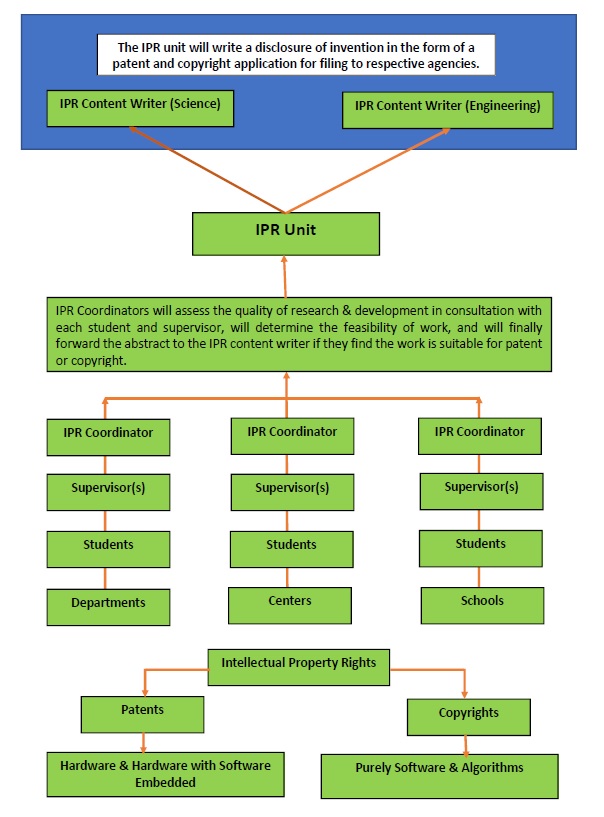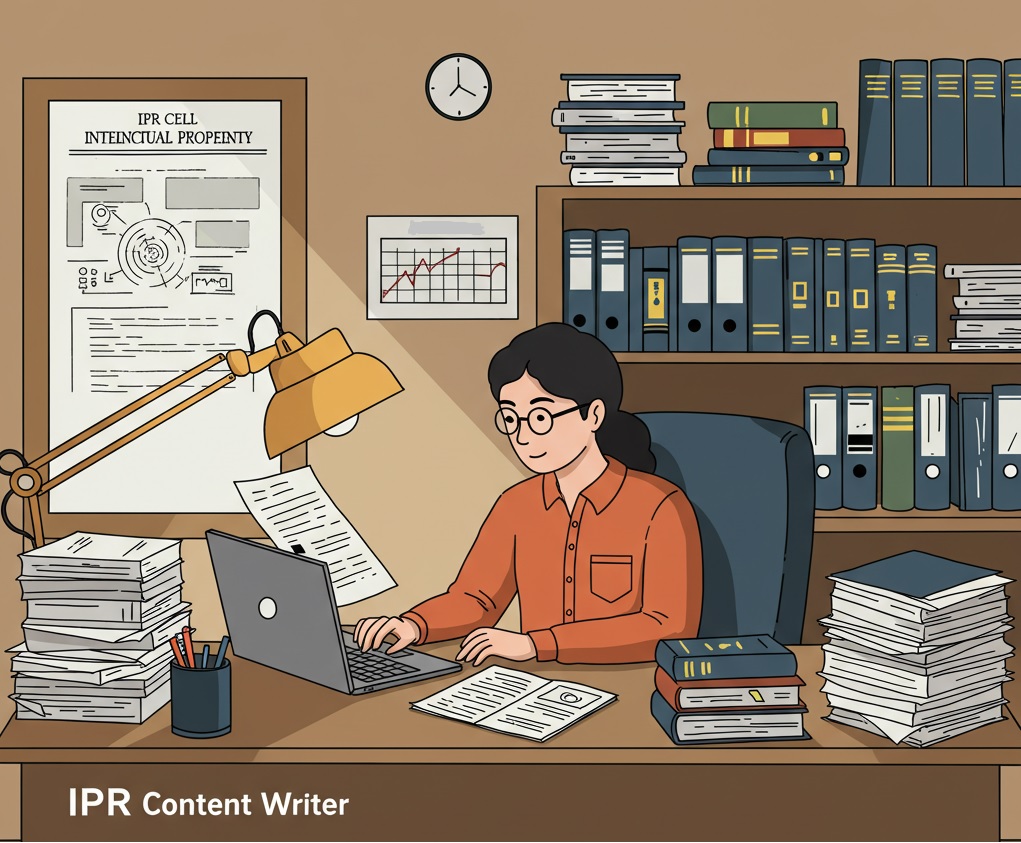A Proposed Plan and Conceptual Framework to Increase the Number of Patents and Copyrights Filed and Granted for Any Academic Research Institution
Published in Social Sciences, Education, and Business & Management

Intellectual Property Rights (IPR), Research and Innovation, Institutional Excellence,
Institutional Financial Growth, Start-ups
Behind the Paper
Intellectual Property Rights (IPR) play a vital role in fostering innovation, encouraging creativity, and protecting original ideas. For institutions, especially academic and research institutions, IPR is a key asset that supports growth, reputation, and economic value. IPR provides legal protection for inventions, designs, trademarks, and creative works. This protection motivates researchers, faculty, and students to innovate without fear of losing ownership of their ideas. Institutions with a strong IPR portfolio are often seen as leaders in innovation. Patents, copyrights, and trademarks serve as indicators of academic and research excellence. IPR can be monetized through licensing, joint ventures, or commercialization. Revenue generated through IPR can be reinvested into further research and development. Government agencies, industries, and investors prefer to collaborate with institutions that have well-managed IPR systems. IPR encourages the publication and dissemination of knowledge while ensuring the creators retain rights and receive due credit. Institutions with strong IPR policies can support spin-offs and start-ups, giving students and researchers a platform to commercialize their work. It fosters a culture of entrepreneurship and innovation on campus. For the same, we have proposed a conceptual framework for how to increase maximum IPRs from any academic and research institution with no compromise on mass-producing IPRs quality outputs.
Challenges
After getting experience with the values of quantitative data resulting in qualitative outcomes during the engagements and participating in the world university rankings, domestic rankings, magazine-based rankings, faculty self-appraisal, external peer review, and the perspective plan under the framework of the Institute of Eminence, the research outcomes pertaining to IPRs have great value and importance in projecting the Institute at the global and domestic platforms and getting good scores and relative rank and also open a door of funding. IPRs are the important source for generating revenue and contributing to the institute's healthy financial resources. Result-oriented IPRs have a great demand for the industries, for the graduates who opted for the start-ups, and for the common society; they need to use them in their fields. Due to the lack of an efficient IPR Unit/Cell and less focus on healthy research, which might be due to the lack of proper strategy, lack of funds, or lack of teaching, learning, technology and guidance in research, the institute is not able to deliver a good number of result-oriented IPRs in most cases. These are the challenges for the institute. However, mass-producing IPRs often leads to lower-quality outputs, and we have to take care of it, and that is why we are stating result-oriented IPRs for commercial applicability. Drafting effective IPRs requires subject-matter experts, legal experts, and strategists, and that is why we have proposed to engage the supervisor, IPR coordinator, and content writer.
Successes
Success in generating a large number of IPRs (Intellectual Property Rights) depends not only on quantity but also on strategic value, quality, and alignment with institutional goals. For the same, we need to encourage creativity and R&D across departments, centers, and schools within the institution. We also need to streamline invention disclosure processes. We also need to evaluate ideas based on commercial potential, novelty, legal defensibility, and business alignment. Collaborative research is also a very good idea, and that is why we need to partner with other universities, research institutes, or companies for joint IP development. We also need to regularly scan internal projects for patentable and copyright materials, and we also need to create a dedicated team or committee to proactively identify and extract IP from ongoing R&D. The institute has to allocate budget for filing, maintaining, and enforcing IPRs. There must be a provision to offer rewards or recognition to inventors for successful filings, grants, licenses, and commercialization. There must be institutional-level efforts for generating awareness and conducting IP training across all levels, from engineers to executives, including students from different disciplines. Make IP literacy part of annual training programs. We also need to align IP generation with product roadmaps and licensing strategy. To get success in the aforesaid, we have proposed a feasible, scalable, and sustainable plan and conceptual framework and to engage the IPR coordinators and supervisors from the departments, centers and schools to get in constant touch with the students and faculty members of different disciplines and programs who are engaged in research.
A detailed conceptual framework is proposed below:
Under this conceptual framework, an IPR Coordinator (a faculty member) has to be nominated from the department, center, and school. An IPR coordinator in consultation with a supervisor will monitor the development of research work of students: MS, PhD, UG, PG, dual degree, and integrated course students and the research scholars, including the faculty members. The IPR Coordinator and Supervisor(s) will remain constantly in touch with the students when they are engaged in their research and will assess if research and innovation are liable for patent or copyright. The IPR coordinator will also remain in touch with the respective faculty members who are engaged in R & D. We are sure the framework proposed below will definitely increase the number of IPRs, and that will shape the institutions of research excellence, a source of revenue generation through licensing and commercialization, also contribute to the reputation of the institutions, and support spin-offs and start-ups. Revenue generated through IPRs can be reinvested into further research and development. We have to be more focused during the period, especially in Indian courses and curricula, as our UG (4th year) project normally starts at the end of the 6th semester and completes in the forthcoming semester; the UG (5th year) project normally starts at the end of the 7th semester and completes in the forthcoming semester; PG project work normally starts either in the 2nd or 3rd year (M.Tech. for 2 semesters in the 2nd year and in others 3rd year, either one or two semesters in the 2nd or 3rd year); a PhD thesis can be submitted in a minimum of 2 years and a maximum of 8 years, and an MS thesis can be submitted in a minimum of 2 years and a maximum of 5 years. Therefore, we have to be focused during the entire period in the case of PhD and MS. Other inventors from the institute, including faculty members, may directly submit their research and innovations to the IPR Unit.

Follow the Topic
What are SDG Topics?
An introduction to Sustainable Development Goals (SDGs) Topics and their role in highlighting sustainable development research.
Continue reading announcement



Please sign in or register for FREE
If you are a registered user on Research Communities by Springer Nature, please sign in
Let's comment on this post. Is this proposed plan and the conceptual framework beneficial for the academic and research institutions?